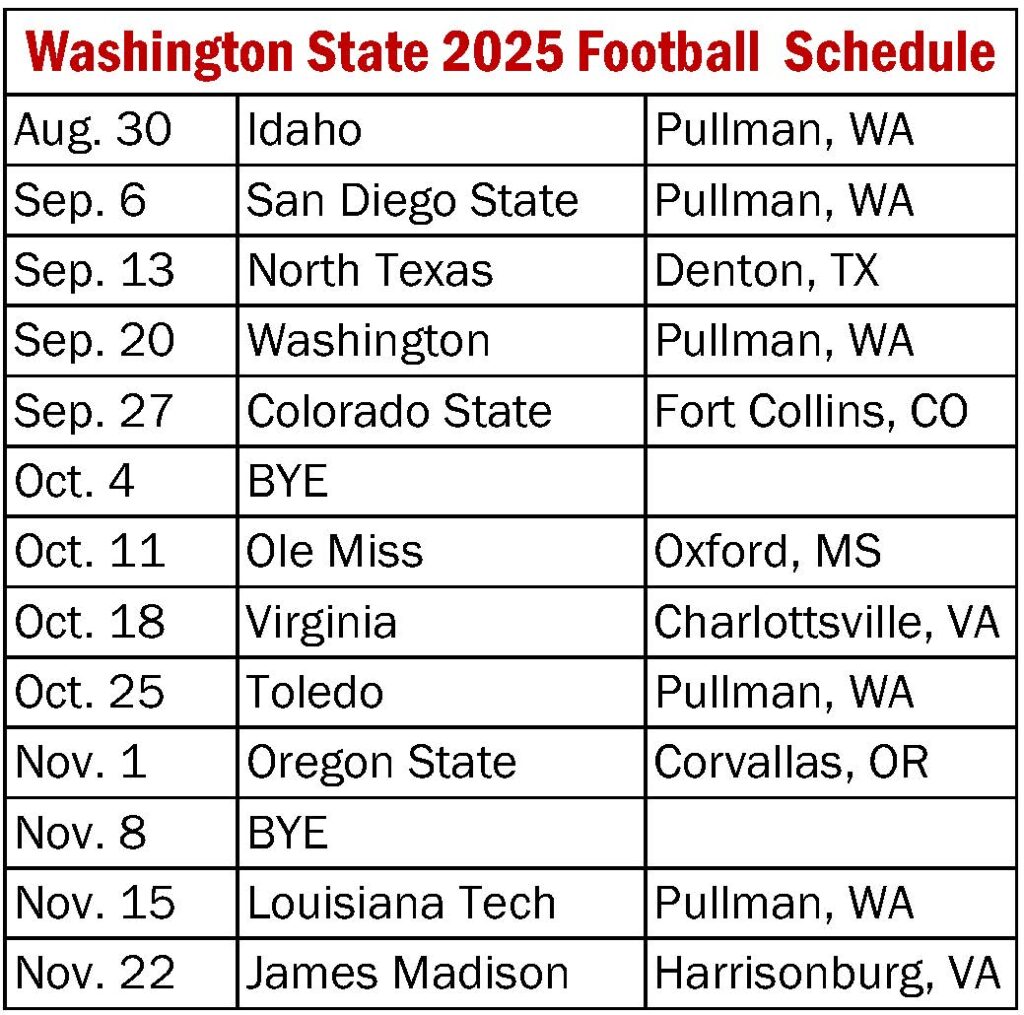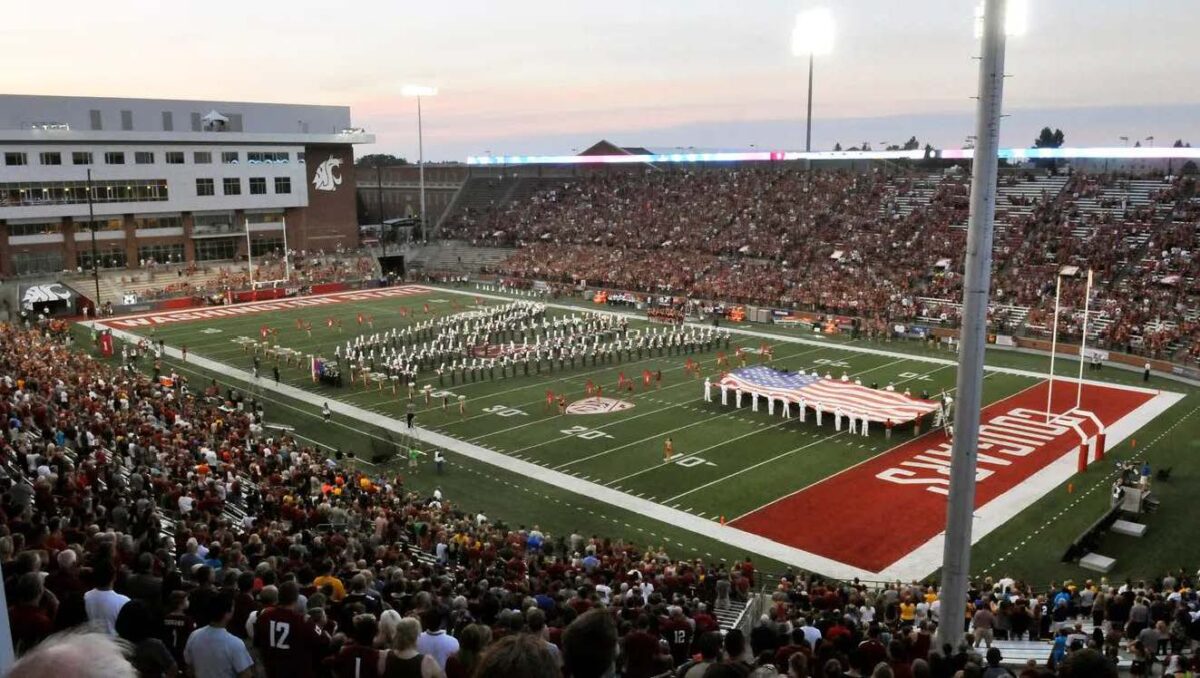Blog Article
Washington State Football 2025: The Ultimate Rebuild
New Washington State Football Coach Jimmy Rogers has inherited one hell of a mess.
The new Washington State head coach took over a program that lost 46 players to the transfer portal, watched its former coach flee to Wake Forest, and now sits as one of just two teams in what used to be the mighty Pac-12. If you’re looking for a case study in how quickly college football can flip your world upside down, look no further than Pullman, Washington.
But here’s the thing about rock bottom—it’s also the perfect foundation to build something special.
The South Dakota State Invasion
Rogers didn’t just take the Washington State job.
He brought an entire army with him from South Dakota State, where he compiled a ridiculous 27-3 record over two seasons and won back-to-back FCS national championships. Of the 20 transfers joining the Cougars for 2025, 15 are following Rogers from South Dakota State (the Jackrabbits).
This isn’t your typical coaching hire where a few assistants tag along. This is a full-scale program transplantation:
- Defensive backs: Tucker Large, Colby Humphrey, Matt Durrance, Trey Ridley, Caleb Francl, and Cale Reeder
- Running backs: Maxwell Woods, Kirby Vorhees, and Angel Johnson
- Tight ends: Beau Baker (plus Michigan State transfer Ademola Faleye)
- Defensive line: Max Baloun, Buddha Peleti, Darrion Dalton, and Malaki Ta’ase
- Linebackers: Anthony Palano and Carsten Reynolds
- Special teams: Kicker Jack Stevens and punter Dylan Mauro
Rogers is essentially betting his entire reputation on one simple premise: that his championship-winning system and the players who executed it can translate from FCS to FBS competition.
The Portal Bloodbath
Want to understand the full extent of this dramatic rebuild?
Washington State lost their starting quarterback (John Mateer to Oklahoma), their top running back (Wayshawn Parker to Utah), their best linebacker (Buddah Al-Uqdah to rival Washington), and multiple offensive linemen who followed former coach Jake Dickert to Wake Forest.
The numbers tell the story:
- 46 players entered the transfer portal
- 26 scholarship players departed
- 11 starters found new homes
- 7 players followed Dickert to Wake Forest
This wasn’t just roster turnover—this was roster demolition.
But here’s where it gets interesting. Ten players who initially entered the portal because of coaching uncertainty withdrew their names and decided to stay. These returners include projected starting quarterback Zevi Eckhaus, receivers Josh Meredith and Tre Shackleford, and cornerback Jamorri Colson.
The Quarterback Situation
Zevi Eckhaus might be the most important player in college football you’ve never heard of.
After spending 2024 as John Mateer’s backup, Eckhaus got his moment in the Holiday Bowl and absolutely delivered. He completed 31 of 43 passes for 363 yards, three touchdowns, and two interceptions in his first FBS start. More importantly, he briefly entered the transfer portal before deciding to stay and bet on himself under the new coaching staff.
This decision could define Washington State’s 2025 season.
Eckhaus brings a different skill set than the departed Mateer—less of a dual-threat, more of a traditional pocket passer. But in Rogers’ system, which emphasizes ball control and efficient passing rather than the Air Raid’s vertical attack, Eckhaus might be a perfect fit.
The Scheme Transformation
Here’s what makes this rebuild even more fascinating.
Rogers isn’t just changing the players—he’s completely overhauling the offensive and defensive philosophies that have defined Washington State football for over a decade. The Air Raid system that made the Cougars famous is being replaced by a more balanced, physical approach that emphasizes:
- Two tight end sets instead of four and five receiver packages
- Power running game instead of spread concepts
- Ball control instead of high-tempo passing
- Defensive pressure instead of coverage-heavy schemes
The new coaching staff has brought in three tight ends through recruiting and transfers, plus converted linebacker Hudson Cederland to the position. This signals a fundamental shift toward formations and concepts that would be unrecognizable to Mike Leach or his successors.
The Recruiting Reality Check
Let’s be brutally honest about Washington State’s 2025 recruiting class.
Ranked 71st nationally by ESPN, this represents a historic low for a program that had never previously finished below 76th in recruiting rankings. The class lacks the blue-chip talent that defined previous WSU recruiting cycles, instead featuring a mixture of:
- 18 high school prospects (many flipped from South Dakota State)
- Multiple JUCO transfers, including top-rated receiver Devin Ellison
- Graduate transfers filling immediate needs
- Three-star prospects rather than four-star game-changers
But here’s the counterargument: Rogers isn’t trying to win a recruiting ranking. He’s trying to build a cohesive team that can execute his system immediately. Sometimes the best recruiting class isn’t the one with the highest ratings—it’s the one with the right players for your specific approach.
The Schedule Gauntlet
Washington State’s 2025 schedule reads like a geography lesson and a difficulty test rolled into one.
The Cougars will face six teams they’ve never played before, make three trips east of the Mississippi River before Halloween, and somehow play Oregon State twice in the same month. Here’s how the season breaks down:
Winnable home games:
- Idaho (August 30) – FCS opponent, regional rivalry
- San Diego State – Mountain West program in transition
- Toledo – Solid MAC team, but beatable
- Louisiana Tech – Conference USA opponent
- Oregon State (November 29) – Pac-12 rematch
Challenging road tests:
- North Texas – Improved AAC program
- Colorado State – Mountain West contender
- Ole Miss – SEC powerhouse (guaranteed loss)
- Virginia – ACC program on the rise
- James Madison – Sun Belt success story
- Oregon State (November 1) – First of two meetings
Most analysts project a 5-7 finish, with strong home performance offsetting road struggles. But in a rebuilding year with this much roster turnover, even that might be optimistic.

The Unique Pac-12 Situation
Here’s something that makes Washington State’s rebuild completely unprecedented.
The Cougars are one of just two remaining members of the Pac-12, alongside Oregon State. This creates challenges that no other program faces:
- Scheduling difficulties requiring creative non-conference arrangements
- Recruiting hurdles without a stable conference identity
- Financial constraints from reduced media rights revenue
- National relevance questions in a two-team conference
The Oregon State double-header perfectly illustrates this bizarre reality. The schools will meet November 1 in Corvallis and November 29 in Pullman—the first time they’ve played twice in the same season since 1945. It’s a scheduling necessity born from conference chaos.
The Make-or-Break Factors
Rogers’ success in 2025 will depend on three critical variables.
First: Can the South Dakota State transfers handle the jump from FCS to FBS competition? These players dominated at the subdivision level, but facing Power 4 and Group of 5 opponents every week presents a massive step up in speed and athleticism.
Second: Will the new offensive system mesh with returning skill position players? Receivers like Meredith and Shackleford thrived in the Air Raid, but adapting to a more balanced approach with tight end-heavy formations could create growing pains.
Third: How quickly can Rogers establish his culture and leadership in a program that’s experienced massive upheaval? Championship coaches succeed because their players buy into their vision. With so many new faces and systems, building that trust becomes paramount.
The Bottom Line
Washington State’s 2025 season isn’t really about wins and losses.
It’s about Jimmy Rogers proving that his championship formula can scale from FCS to FBS competition. It’s about whether a program can completely reinvent itself in one offseason and remain competitive. It’s about survival in the weird, wild world of modern college football.
The Cougars enter this season with the lowest expectations in program history. No bowl projections. No conference championship hopes. No playoff dreams.
But sometimes that’s exactly where magic happens.
Rogers has built championship programs before. He’s developed players, installed winning systems, and created cultures that produce results. The question isn’t whether he can coach—it’s whether he can do it fast enough to keep Washington State relevant while rebuilding from scratch.
One thing is certain: college football has never seen a rebuild quite like this one.
The 2025 Washington State Cougars will either validate Rogers’ vision and provide a blueprint for program transformation, or they’ll serve as a cautionary tale about the dangers of wholesale roster replacement. Either way, they’ll be absolutely fascinating to watch.
The Next Billion Dollar Game
College football isn’t just a sport anymore—it’s a high-stakes market where information asymmetry separates winners from losers. While the average fan sees only what happens between the sidelines, real insiders trade on the hidden dynamics reshaping programs from the inside out.
Our team has embedded with the power brokers who run this game. From the coaching carousel to NIL deals to transfer portal strategies, we’ve mapped the entire ecosystem with the kind of obsessive detail that would make a hedge fund analyst blush.
Why subscribe? Because in markets this inefficient, information creates alpha. Our subscribers knew which coaches were dead men walking months before the mainstream media caught on. They understood which programs were quietly transforming their recruiting apparatuses while competitors slept.
The smart money is already positioning for 2025. Are you?
Click below—it’s free—and join the small group of people who understand the real value of college football’s new economy.
